Growing peppers upside down, suspended like vibrant green chandeliers, isn’t just a quirky gardening trend but a revolution for home gardeners. First, it saves space. If you’re short on garden real estate, this vertical approach lets you make the most of your available space.
Second, it minimizes pest problems. With peppers hanging upside down, pests have to work extra hard to reach your precious produce. Finally, it’s easier to maintain. You don’t have to bend or kneel anymore for weeding and harvesting, as everything’s at eye level.
To experience fun, productive, and visually stunning peppers, let’s get into the nitty-gritty of how to make it happen.
Materials And Tools Needed
- Some 5-gallon buckets or specially designed upside-down planters
- Potting soil
- A drill for creating drainage holes
- A strong hook or hanger
- Fertilizer
- Pepper plants or seeds
- Banana peels
- Fish remains (or fish emulsion)
Step-by-step Guide
1. Choose The Type Of Peppers And Planters
You can grow a variety of pepper types upside down, from bell peppers to chili peppers, but consider the size and weight of your peppers. Smaller varieties tend to work better because they’re less likely to pull the plant down.
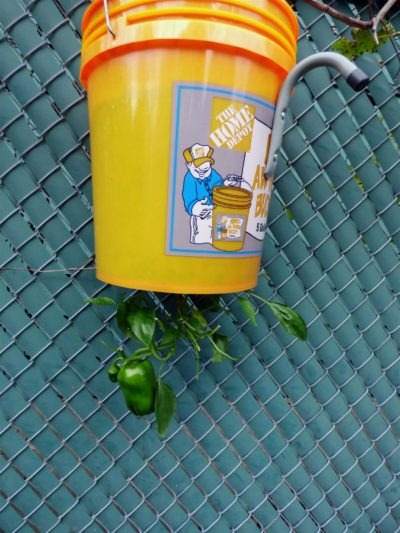
For planters, you can buy specially designed upside-down planters, or you can repurpose 5-gallon buckets. Whichever you choose, make sure they have a well-fitting lid to retain moisture.
2. Prepare Soil And Planters
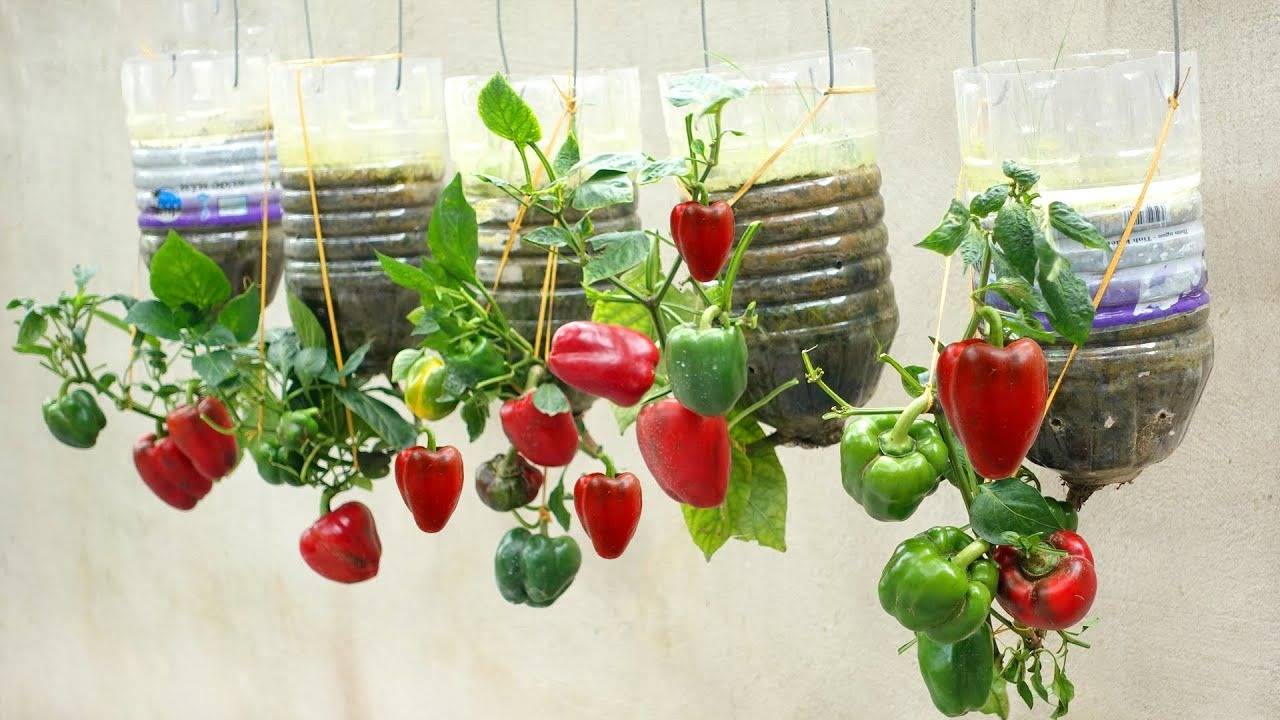
Before planting, drill a hole in the bottom of your container for drainage. Fill the container with potting soil, leaving about an inch from the top to prevent water from overflowing when you water your peppers. Make a hole in the center of the soil that’s just big enough for your pepper plant’s root ball.
3. Grow Peppers Upside Down
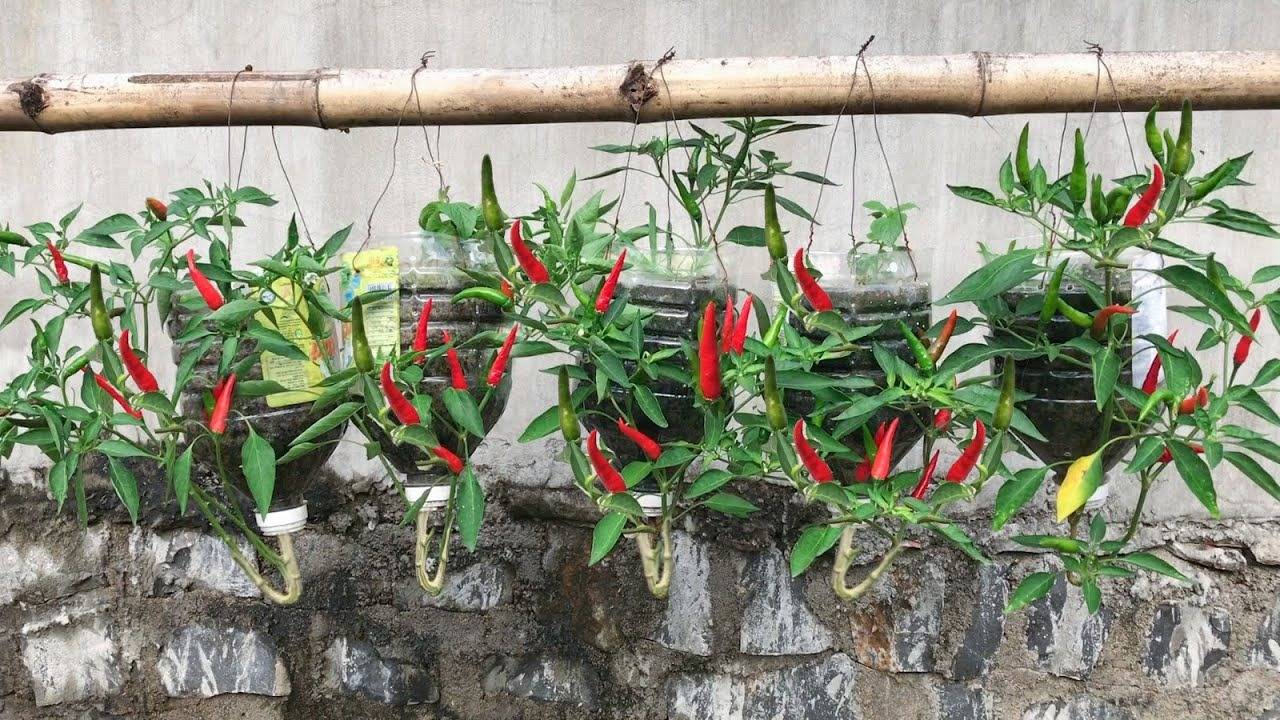
Peppers love sunshine, so find a sunny spot to hang your planters. They need at least 6–8 hours of direct sunlight daily. Ensure the location is also stable, as fully watered planters can be heavy. If you’re hanging them from a structure, make sure it’s strong enough to support the weight.
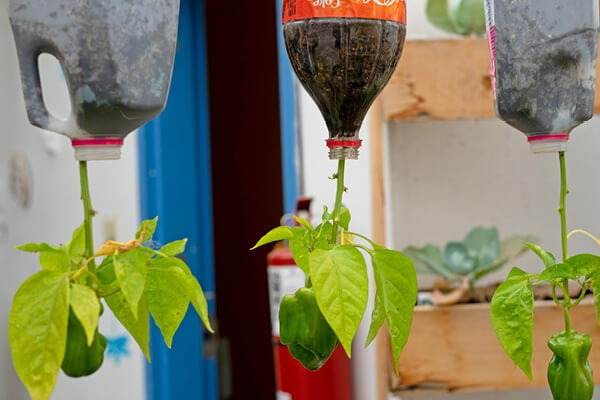
Gently insert your pepper plant through the hole in the container, with the root ball inside and the leaves outside. Add more soil if needed to secure the plant, and make sure it’s stable. Once you’re confident, give your planter a gentle flip, and your pepper plant will hang down like a greenery chandelier.
4. Take Care Of Peppers
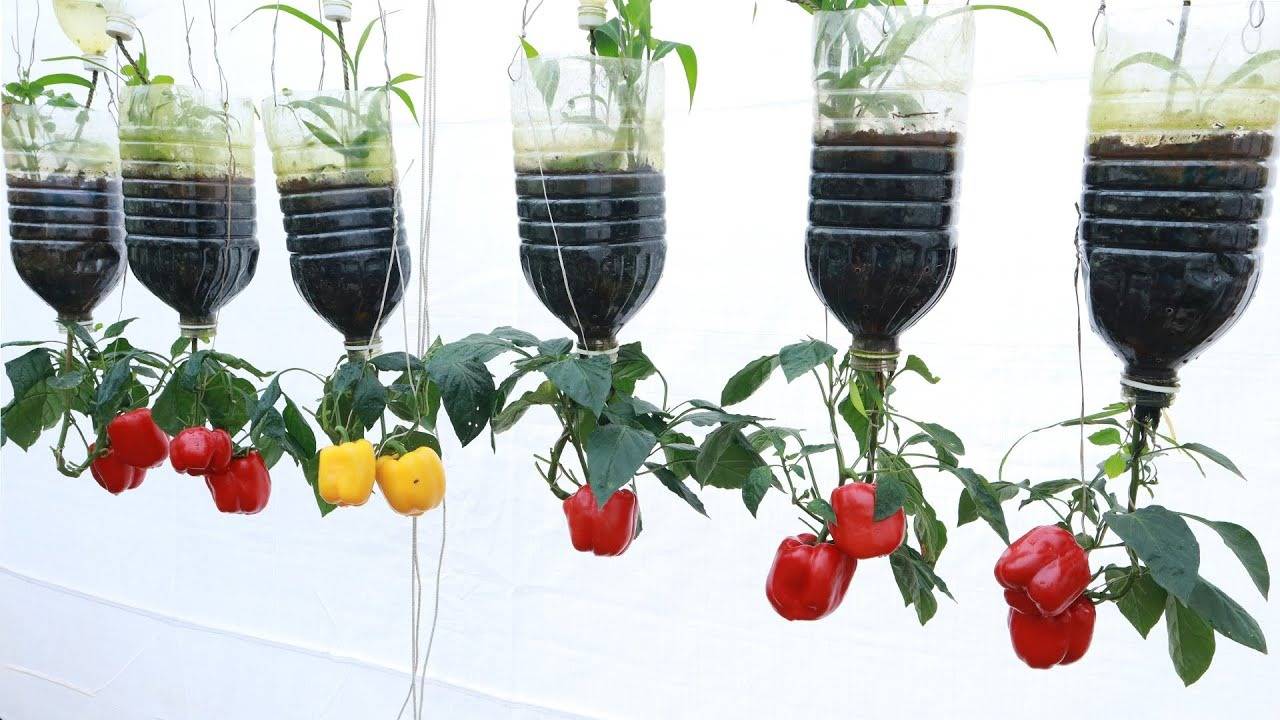
The amount of water can depend on the soil type, pepper varieties, and the weather, but it’s recommended to give them 1-2 inches of water each week. In hot weather, you might need to water daily. To check if your pepper plants need water, you can use a soil moisture meter or simply feel the soil with your finger. If it feels dry and crumbly, it is time to water it.
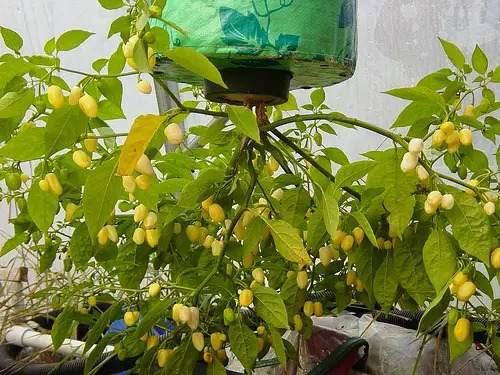
To keep your peppers well-fed, use a balanced fertilizer or get creative and organic by placing banana peels in the soil. The peel will decompose over time, releasing nutrients like potassium, calcium, and magnesium. Fish fertilizer is another great choice, which is rich in nitrogen, phosphorus, potassium, and other micronutrients that are beneficial for plant growth and health.
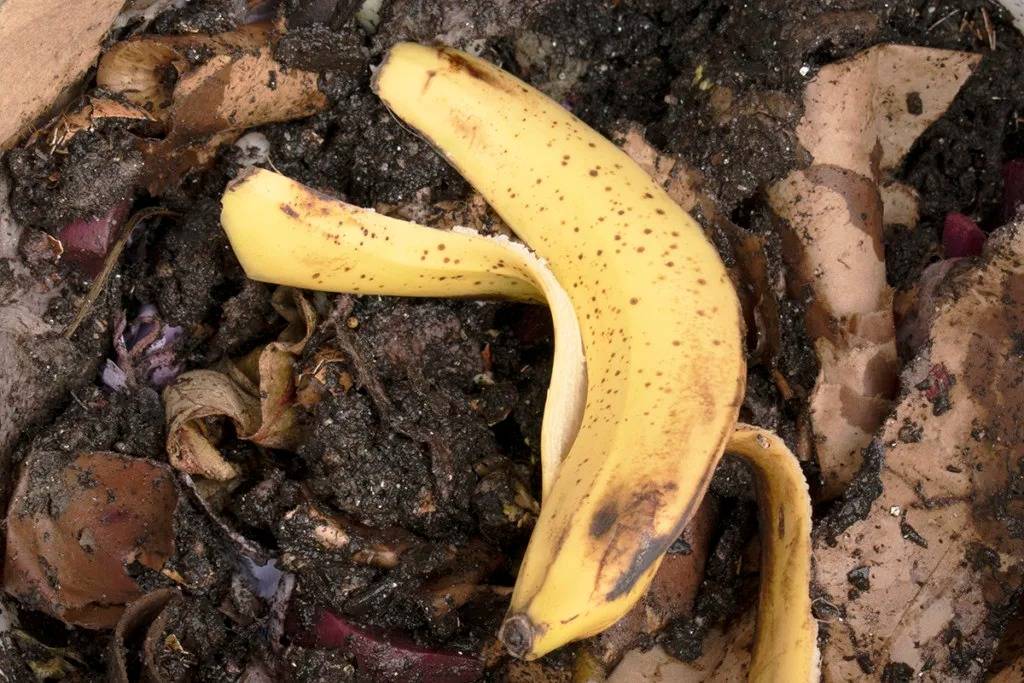
5. Harvest And Store
As your peppers grow and ripen, harvesting is a breeze. Just reach up and pluck them from their hanging abode. Harvesting frequently can encourage more pepper production.
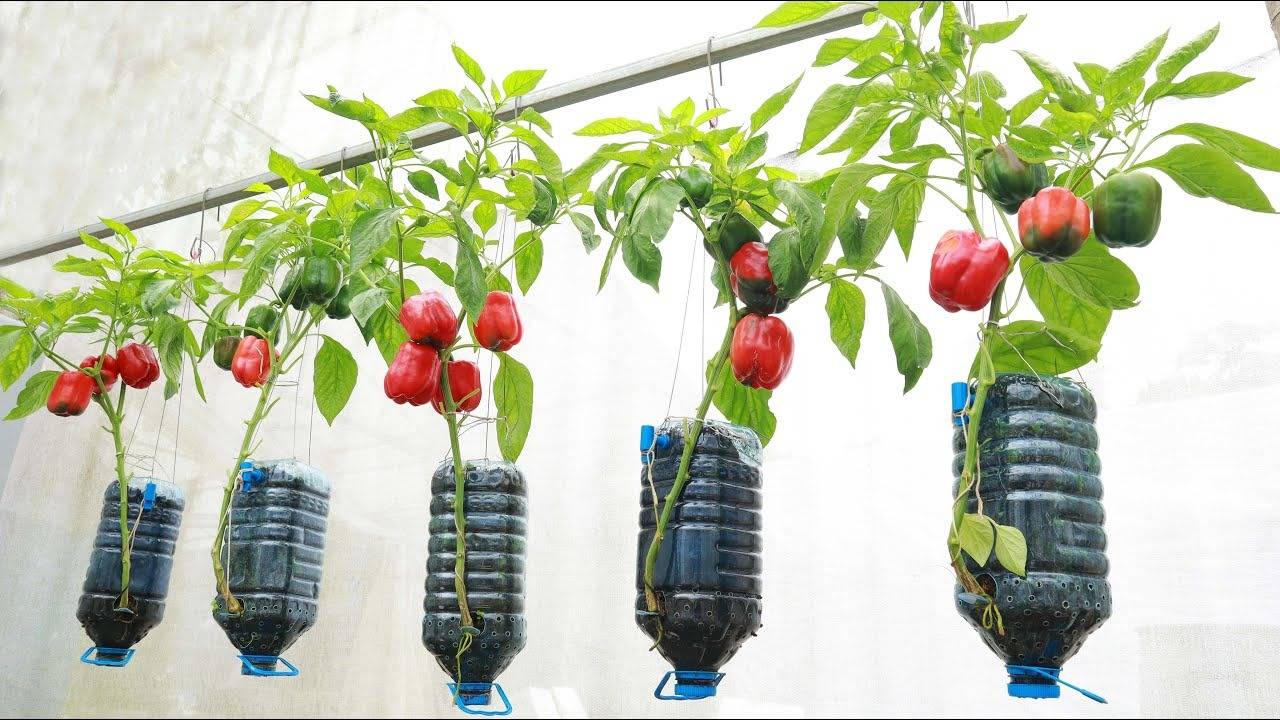
Store peppers in the refrigerator for bell peppers or at room temperature for chili peppers, and use them within a week for the best flavor and freshness. To extend storage, freeze or dry them, and consider pickling for a unique flavor. Ensure they’re in airtight containers or bags to prevent moisture loss or absorption, and regularly check for signs of spoilage.
Bonus Tips
1. Choosing Planter
Buckets are the easiest thing to grow peppers upside down, as they are incredibly user-friendly, particularly when equipped with lids that help to retain water for the upside-down planter.
You can also repurpose sturdy fabric grocery bags as plant containers. By suspending the bags on a strong hook or hanger and filling them with well-draining potting mix, you can efficiently cultivate chili pepper seedlings.
2. Potential Issues
With peppers pointing up, there are only two potential issues. The greatest potential issue is with large-fruited pepper species, such as bell peppers. A huge pepper pointing upward might impose extra strain on the stem, causing it to break off prematurely, such as during strong winds or rain. Another issue is that the peppers are more sensitive to bird damage because they are more exposed.
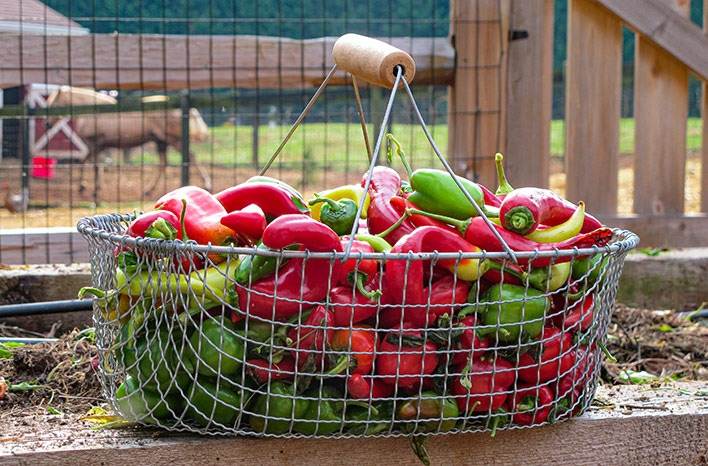
3. Pest Control
To maximize your success, watch for signs of pests and diseases like aphids, corn borers, and powdery mildew and treat them promptly.
4. Pruning
Pruning and pinching back leaves can help improve airflow and keep your peppers healthy. Don’t forget to remove any branches or leaves that touch the ground, as they can attract pests and diseases or rot in wet soil.
Growing peppers upside down is not only a unique gardening experience but also a practical way to enjoy fresh peppers. So, grab your buckets, choose your pepper varieties, and start your vertical garden adventure. If you give it a shot and grow successfully, let’s share with us the fruits of your labor.
